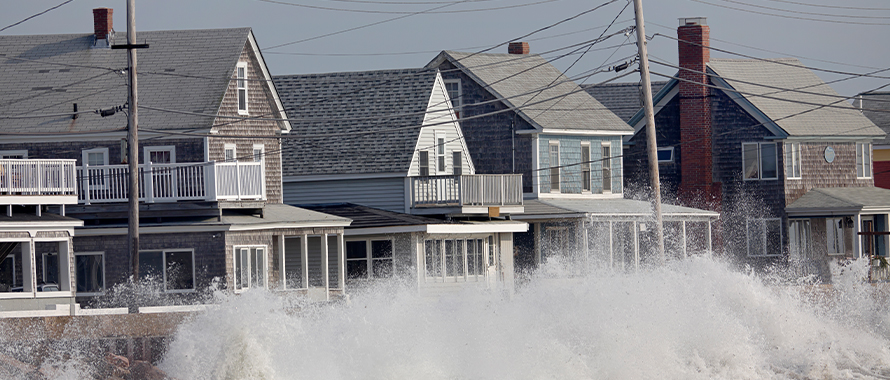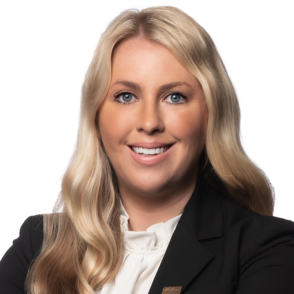The U.S. Flood insurance market is being completely revamped with the launch of the National Flood Insurance Program’s (NFIP) risk rating 2.0, which applies risk modeling technology to evaluate exposure. Simultaneously the market is challenged by double-digit inflationary percentage increases, and the adverse impact of climate change leading to warmer ocean temperatures and more severe catastrophic storms.
Against this backdrop brokers and agents are competing for available capacity on behalf of their clients. Fortunately, working with industry partners such as Burns & Wilcox, that offer significant flood expertise and proven processes, help position them for access to expanded coverage options through the private flood market. Through the direct application of risk modeling technology, aligned with industry-leading expertise, the Burns & Wilcox flood practice can custom tailor solutions that fit the insurable interest of each client, including expanded limits and coverage inclusions not available through the NFIP. Through our national flood practice, our agents and brokers can provide the most comprehensive options available to their clients and help secure long-term revenue opportunities.
Increased flood risks call for advanced modeling efforts
FEMA flood maps have been used for several decades to measure flood exposure for a particular area. These maps have been limited by lengthy, manual processes, which have not been able to keep pace with the quickly evolving flood exposure prevalent in the United States. As a result, new technology and rating parameters have been implemented to better predict future flood risk. Earlier this year Nature Climate Change released a study projecting that the number of people in the U.S. who are exposed to flooding will almost double over the next 30 years, largely because of population growth and construction in areas already prone to flooding.
FEMA has implemented additional flood rating parameters that includes topographical variance at a specific GPS location, estimated first floor elevations, water return levels (including coastal surge, river, lakes, and tsunamis), and reconstruction valuations. The federal organization is using this data and more to update the NFIP’s risk rating methodology (NFIP 2.0). It leverages industry best practices and innovative technology that enable FEMA to deliver rates that are more actuarily sound, more equitable across regions, and better reflect a property’s flood risk. Factors such as historical claims data and NOAA climate models are considered in this modeling process. Other factors such as urbanization, progressive weather patterns, distance to rivers and lakes, and more are helping to further improve risk assessments.
This new modeling is particularly useful for managing macro trends that outpace the traditional NFIP flood maps. In the U.S. for example, the population of Florida has increased by 15 percent in the last decade, with 80 percent of the state’s population living in coastal counties. Public investments in flood control mitigation is uneven at best. The London markets therefore are directing capacity to partners that align critical investments with robust risk analysis. Broker and agents will be expected to align coverage inclusions and limits into a total solution for all properties.
Private options can support full replacement costs
Capacity for Flood insurance is awarded to providers that have the most experience and make the investments needed to support accurate predictive measures. A total of $18 billion in flood losses ($80 billion worldwide) occurred in the U.S. 2010-2020, which after inflation still doubled the claims from the previous decade.
Burns & Wilcox supports its brokers and agents with private market insurance options for residential and commercial properties. These options are especially important to consider in higher-valued or complex properties, where having the proper coverage to insure a loss is imperative and strategic. NFIP often will fail to cover added features like finished basements or fully cover additional buildings, like a pool house or cabana, or custom building features and materials.
Insurance Journal has reported that just 30 percent of insurance policies had updated replacement costs in less than one year since the start of the pandemic. It is a reminder that knowing the accurate replacement costs as part of a home’s valuation for flood coverage is critical. Without proper replacement valuations, a gap in coverage is inevitable.
It is also advisable to offer Primary and Excess Flood coverage with every policy and to discuss any flood-related exclusions for homeowners’ policies so the client knows exactly what is covered. Offering comparisons is an effective way to keep clients informed and fully covered, especially for private market options.
Additional considerations to ensure the likelihood of full coverage include reviewing indirect loss exposure, including loss of use and business income. This is especially true for any primary residences, rental homes, and commercial properties.
Climate change is defining how flood policies are offered
When two beachfront homes in the Outer Banks of North Carolina recently fell into the ocean, it was a reminder of how powerful of an impact climate change has on the flood market. Flood has traditionally been considered a secondary peril in much of the world. However, with damages and exposure from flooding increasing due to many factors, flood may soon be considered a primary peril moving forward. This predicates an imperative need to increase the purchase and uptake of flood insurance to cover the interests of exposed properties.
The increased interest in how climate change is impacting properties is a sign that the market as a whole is adjusting. Real estate and banking professionals increasingly ask questions of our Burns & Wilcox team about the impact of flood risk compared to their portfolios. Increased precipitation and greenhouse gases, along with a rise in sea levels suggests storm surge exposure will increase along the U.S coastlines. Total damages from floods and hurricanes in the U.S. 2021 eclipsed $100 billion, according to data from the National Oceanic and Atmospheric Administration (NOAA). Some models for 2050 and beyond predict a 30-40 percent storm surge increase. With over a third of the U.S. population located in coastal areas, the emphasis on proper evaluation and risk management has never been greater.
We all know that the number of named hurricanes have increased in recent years. This trend is expected to continue during the 2022 hurricane season. NOAA forecasted with 70 percent confidence a likely range of 14 to 21 named storms of which 6 to 10 could become hurricanes including 3 to 6 major hurricanes (category 3, 4 or 5; with winds of 111 mph or higher) this year. With ocean and air temperatures warming, these hurricanes are moving slower and dumping more rain on not just coastal but inland communities, leading to more flooding.
Yet there are also more cases of “sunny-day flooding” or “King Tides” (nuisance flooding) in communities like South Florida which put a strain on drainage systems, especially without effective mitigation efforts.
Key takeaways for brokers and agents
It is estimated that only one-third of the world’s flood risk is insured during a time when flooding is more prevalent around the globe. As brokers and agents work with their clients to provide full flood coverage, here is what the future likely holds:
Refinement in flood modeling continues – Newer technologies like LIDAR can more effectively measure ground elevation and input other factors that modernize the definition of today’s flood risks.
Capacity is a challenge – Only those providers with a firm grip on the latest in modeling advancements and investments will be given available capacity. Expertise and quality matters.
Speed matters – Flood risk must be quickly analyzed so that comparisons can be accurately made to the existing portfolio.
Affordability is an issue – More accurate modeling will support consistent pricing but premium and renewals will remain high in the short-term.
Full coverage is paramount – The goal of insurance is to make the client whole again. This cannot happen without providing full coverage, especially for today’s highly customized and constructed homes.
More risks will likely be shopped in the private flood market – The full impact of NFIP 2.0 will not be fully realized immediately, but private markets can typically offer more coverage inclusions and expanded risk limits.
Proper Indemnity relies on communication and consistent evaluation of the exposure over time – Clients will need to know their options, and additional coverages are often required to support their overall insurance portfolio.
Contributed by Brad Turner, Associate Vice President, National Product Manager, Flood, Burns & Wilcox; Sarah Chandonnet, Manager, Private Client, Burns & Wilcox
This commentary is intended to provide a general overview of the issues contained herein and is not intended, nor should it be construed, to provide legal or regulatory advice or guidance. If you have questions or issues of a specific nature, you should consult with your own risk, legal, and compliance teams.








